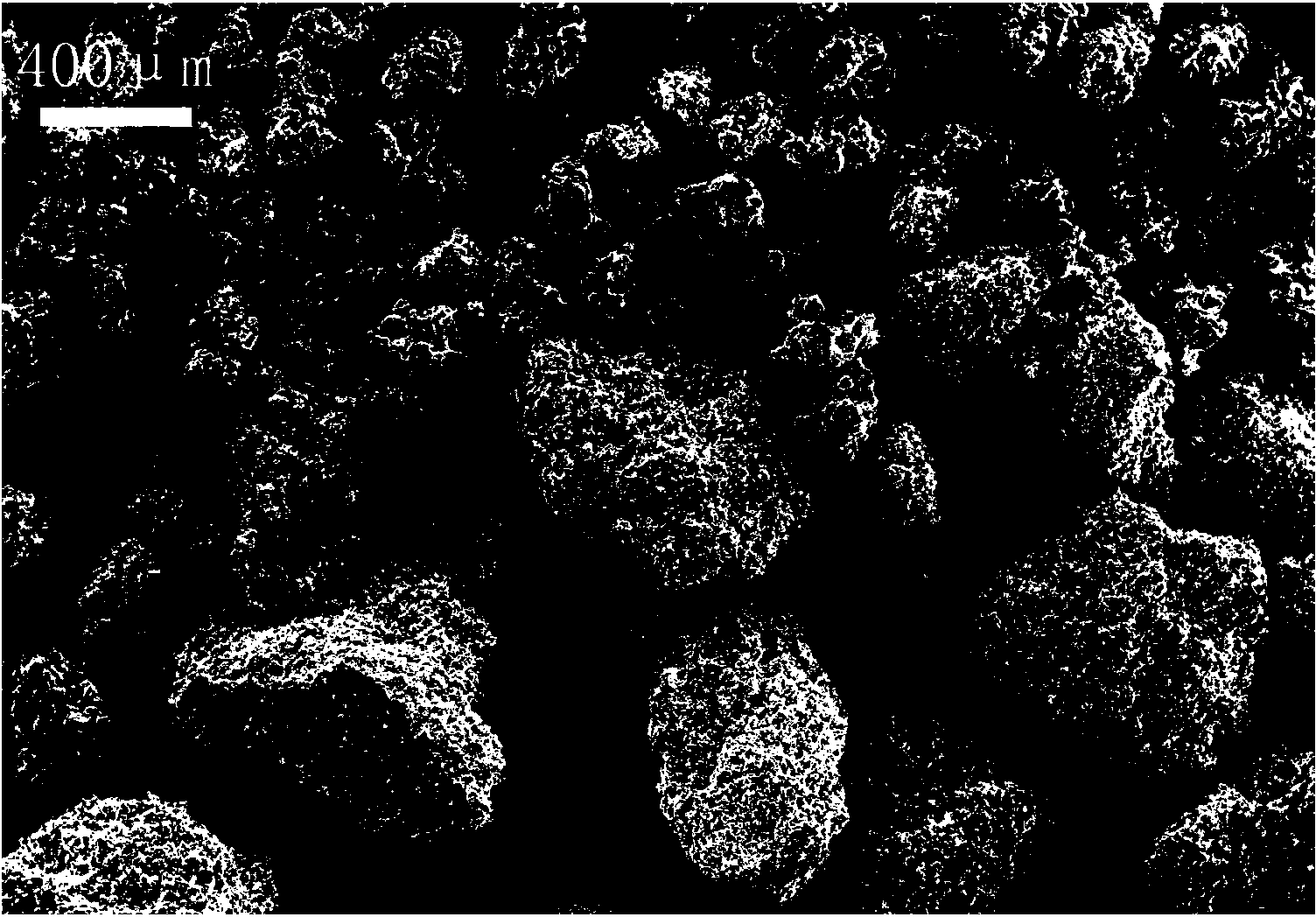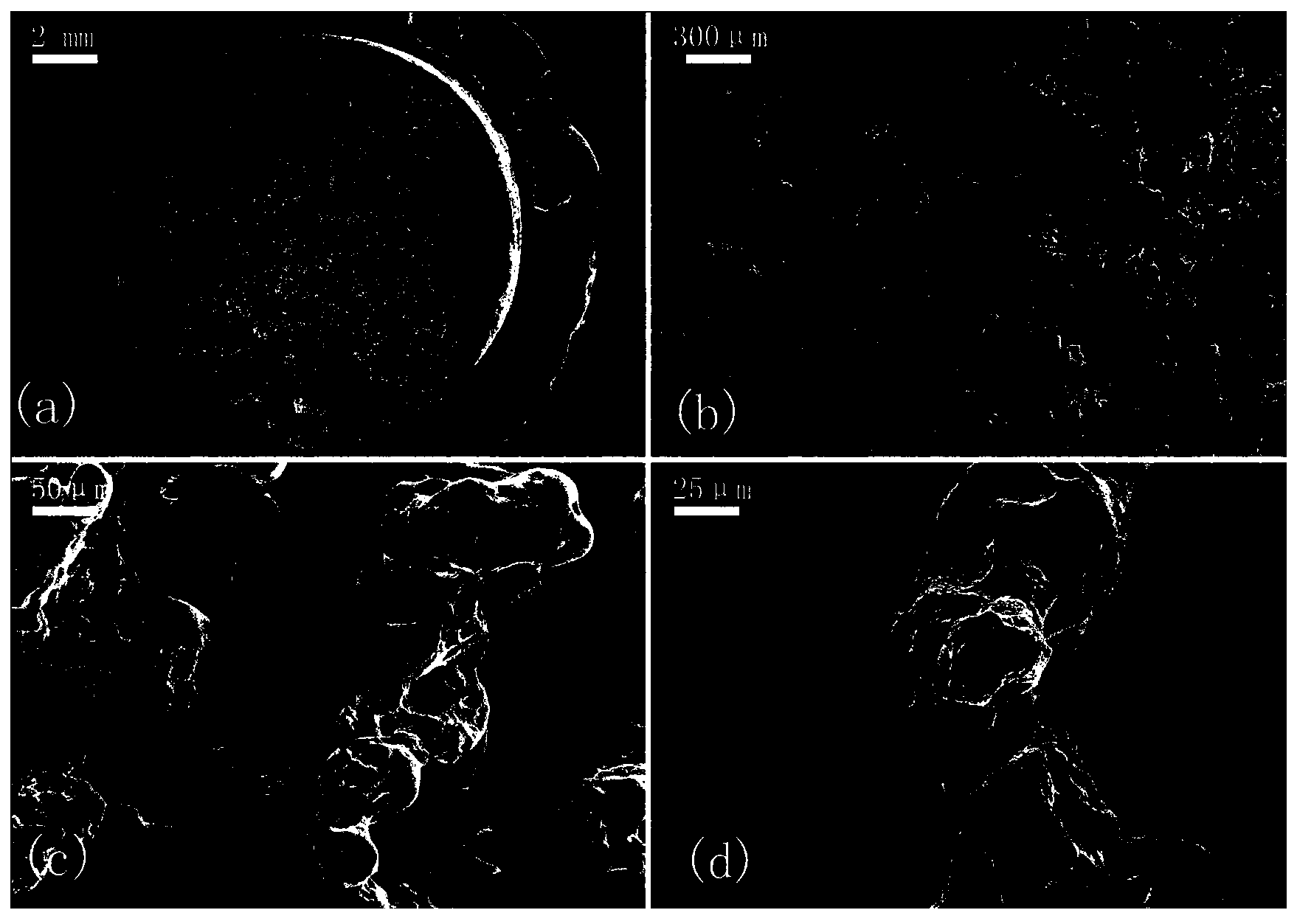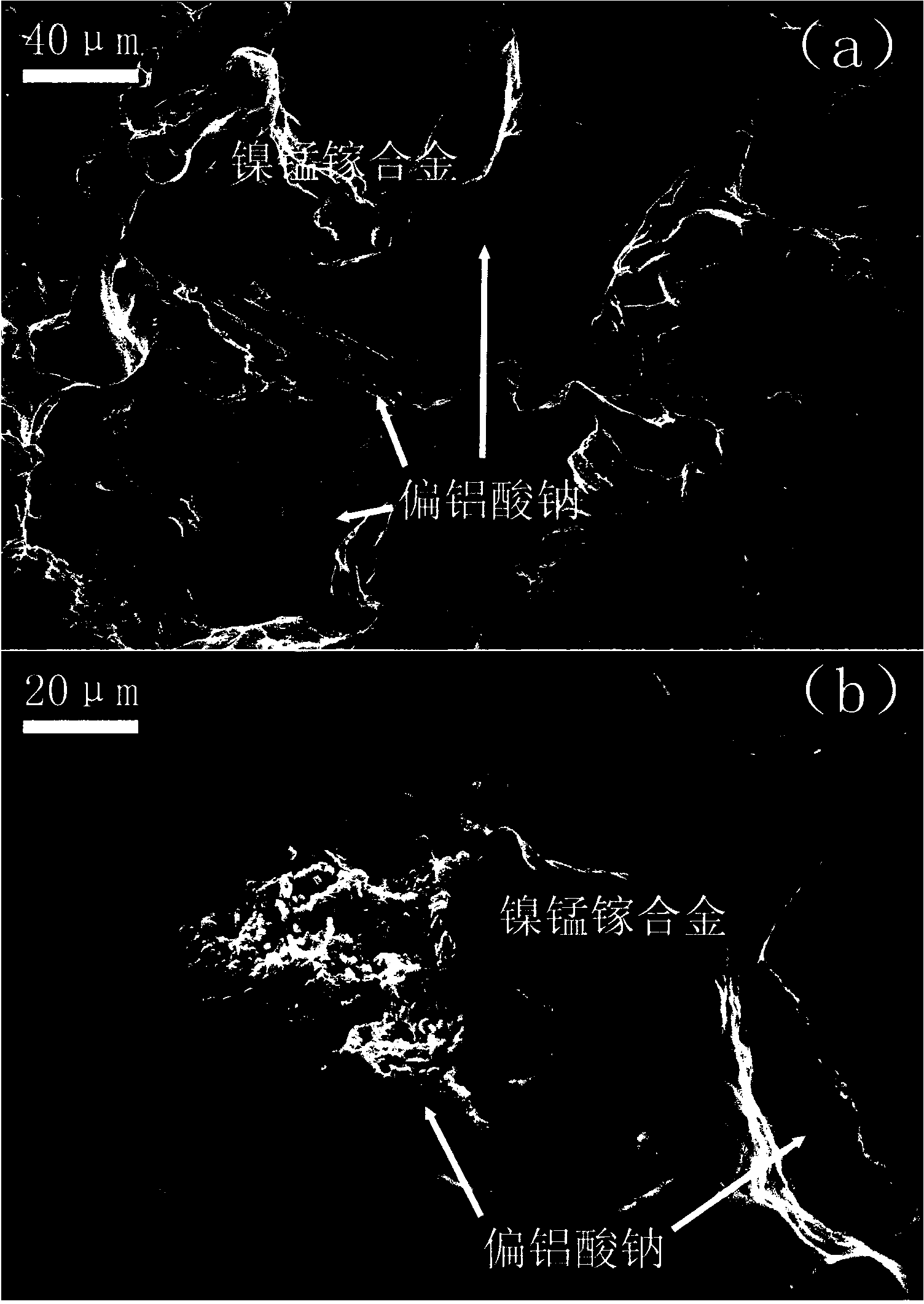Method of preparing porous foam alloy and removing pore forming material sodium metaaluminate
A technology of sodium metaaluminate and porous foam, which is applied in the field of porous foam metal materials and porous foam alloy materials, can solve the problems of fragile samples, large damage to instruments, and long time consumption, and achieves improved preparation processes, simple methods, and reduced production. cost effect
- Summary
- Abstract
- Description
- Claims
- Application Information
AI Technical Summary
Problems solved by technology
Method used
Image
Examples
Embodiment 1
[0028] (1) Preparation of nickel-manganese-gallium alloy raw materials: first prepare the materials according to the mass fraction of nickel as 48%, the mass fraction of manganese as 26.5% and the mass fraction of gallium as 25.5%, and then use the arc melting method to make nickel-manganese-gallium alloy ingot . Then the nickel-manganese-gallium alloy ingot was kept at 900°C for 48 hours to make the composition uniform, and then cooled down to room temperature with furnace cooling. (2) Pore-forming agent: use sodium metaaluminate particles as the pore-forming agent, select 58-75μm and 350-550μm mixed particles (mass 0.5g), put them into a crucible, and then place them together with the crucible in a high-temperature furnace Heat treatment at 1500°C for 4 hours to burn preliminary bonding. (3) Pressure casting: Put the crucible with sodium metaaluminate particles inside into a high-temperature furnace that can be vacuumed, place a pre-prepared nickel-manganese-gallium alloy i...
Embodiment 2
[0038] After the nickel-manganese-gallium alloy ingot is made by the arc melting method, sodium metaaluminate particles with a diameter of 280-355 μm are used as a pore-forming agent, put into a crucible, and heat-treated in a high-temperature furnace for 4 hours at 1470 ° C for preliminary bonding. Put the crucible with sodium metaaluminate particles inside into a high-temperature furnace that can be vacuumed, place the nickel-manganese-gallium alloy ingot prepared in advance on it, and then vacuumize it. After the vacuum of the system reaches above 10-2Pa, heat the crucible and the sample in the cavity, and slowly raise the temperature. When the temperature reaches 1180°C, keep it warm for 8 minutes, and then immediately inject argon until the pressure in the furnace is 0.1MPa. During this process, the molten nickel-manganese-gallium liquid is infiltrated into the gaps of sodium metaaluminate particles by argon pressure to obtain sodium metaaluminate particles and nickel-mang...
Embodiment 3
[0040]After the nickel-manganese-gallium alloy ingot is made by the arc melting method, sodium metaaluminate particles are used as the pore-forming agent, and the particles of 110-280 μm and 450-550 μm are selected to be mixed, put into a crucible, and heat treated in a high-temperature furnace at 1450 ° C for 4 Hours burn for initial bonding. Put the crucible with sodium metaaluminate particles inside into a high-temperature furnace that can be vacuumed, place the nickel-manganese-gallium alloy ingot prepared in advance on it, and then vacuumize it. After the vacuum of the system reaches above 10-2Pa, heat the crucible and the sample in the cavity, and slowly raise the temperature. When the temperature reaches 1170°C, keep it warm for 6 minutes, and then immediately inject argon until the pressure in the furnace is 0.1MPa. During this process, the molten nickel-manganese-gallium liquid is infiltrated into the gaps of sodium metaaluminate particles by argon pressure to obtain ...
PUM
| Property | Measurement | Unit |
|---|---|---|
| Diameter | aaaaa | aaaaa |
Abstract
Description
Claims
Application Information
 Login to View More
Login to View More - R&D
- Intellectual Property
- Life Sciences
- Materials
- Tech Scout
- Unparalleled Data Quality
- Higher Quality Content
- 60% Fewer Hallucinations
Browse by: Latest US Patents, China's latest patents, Technical Efficacy Thesaurus, Application Domain, Technology Topic, Popular Technical Reports.
© 2025 PatSnap. All rights reserved.Legal|Privacy policy|Modern Slavery Act Transparency Statement|Sitemap|About US| Contact US: help@patsnap.com



